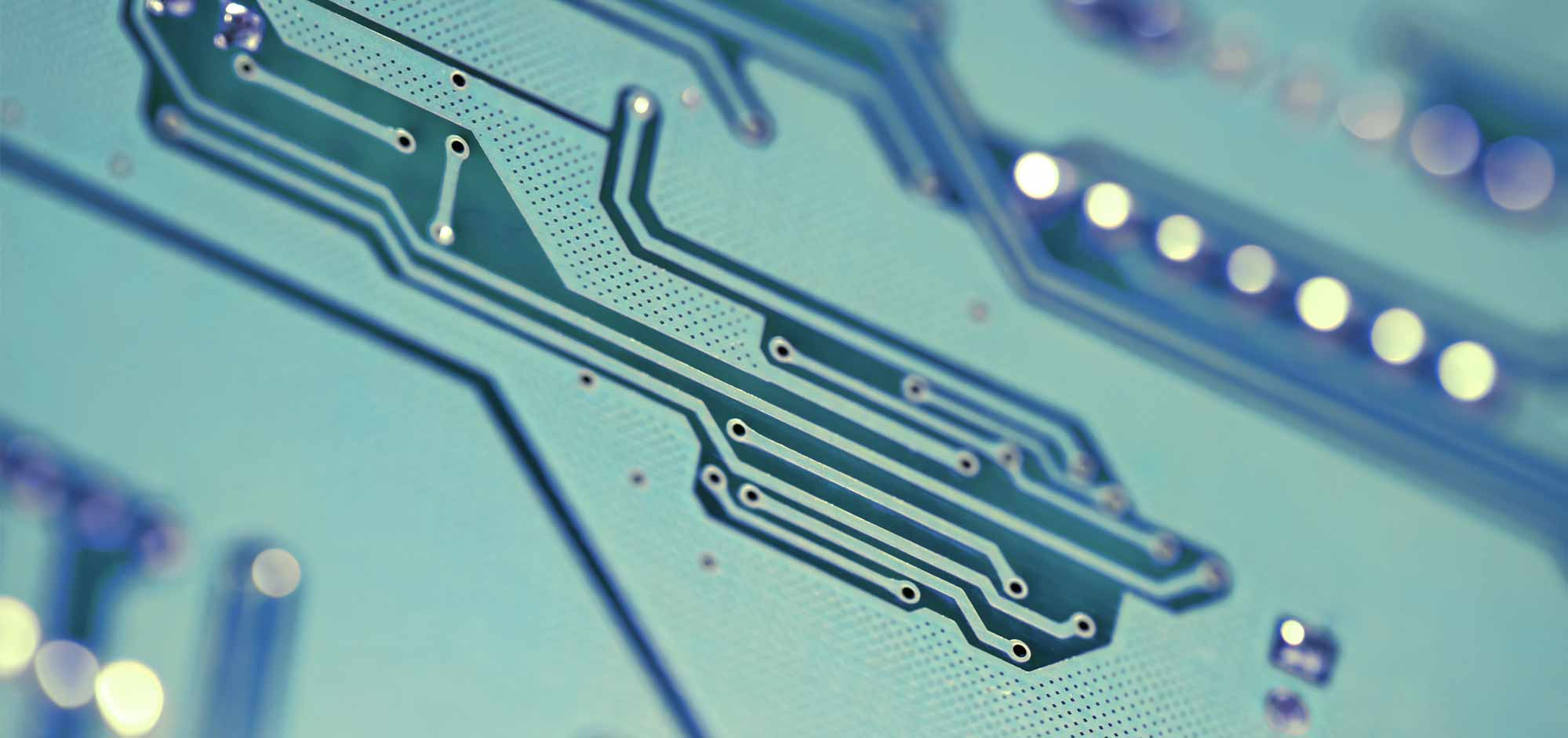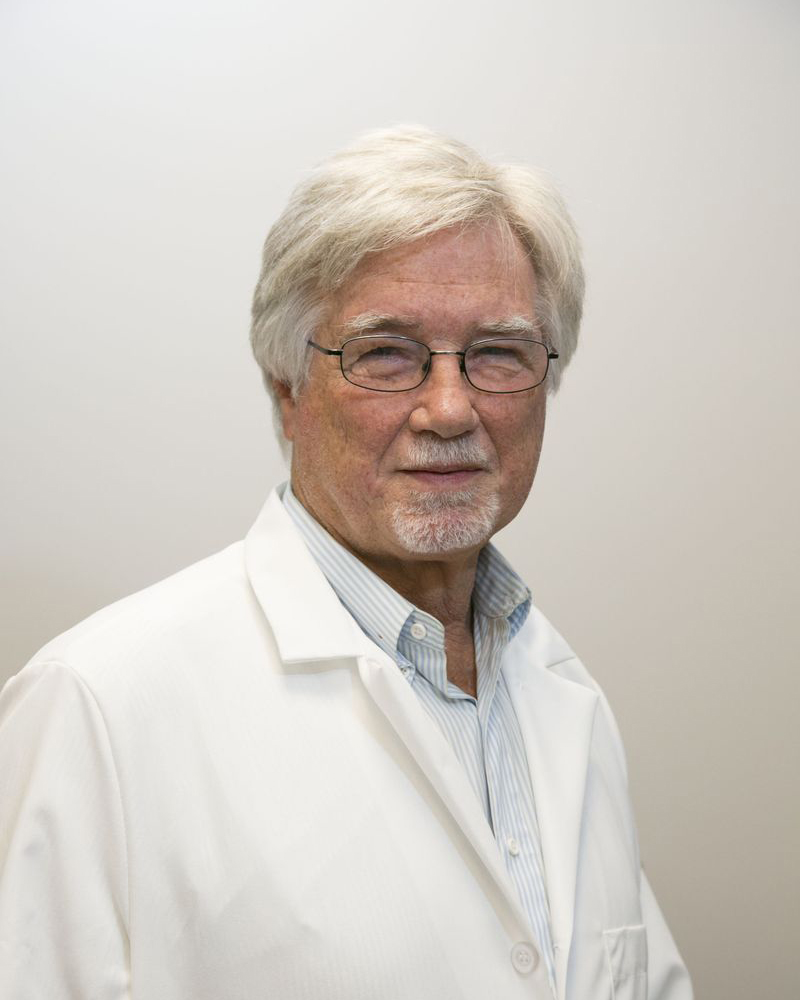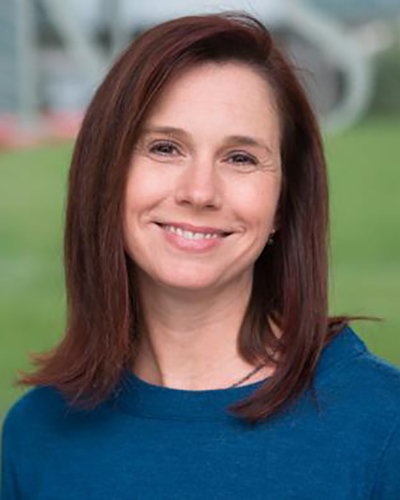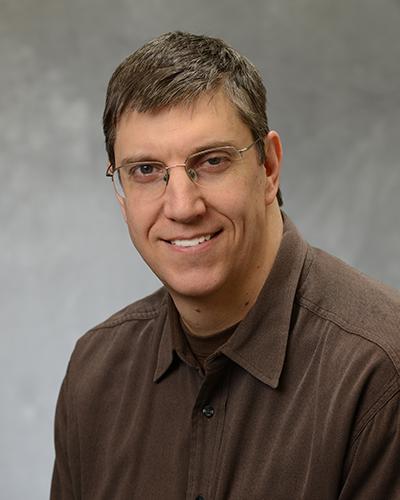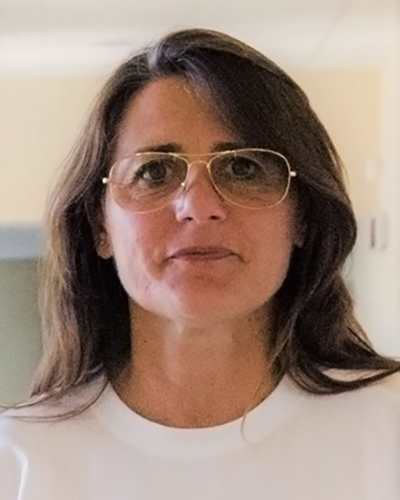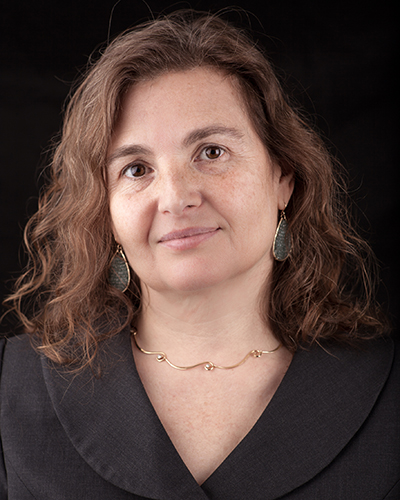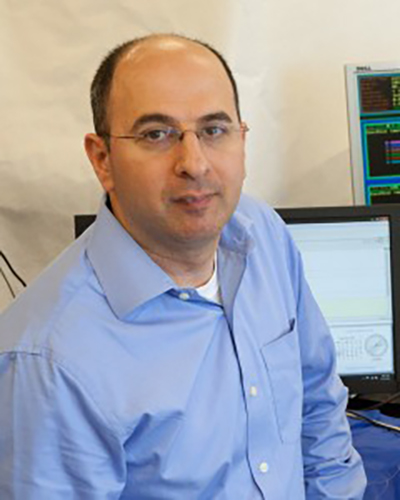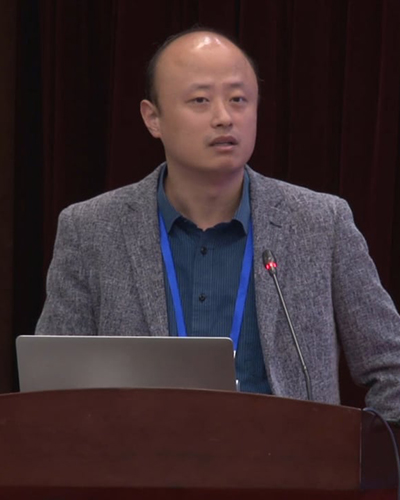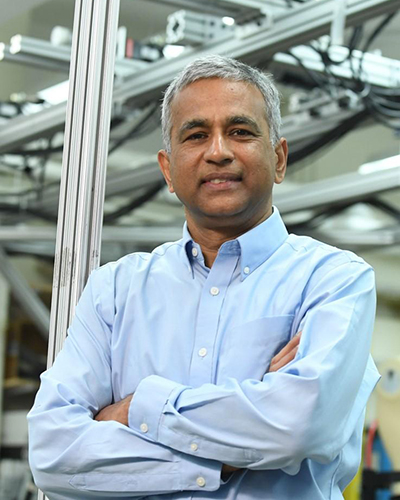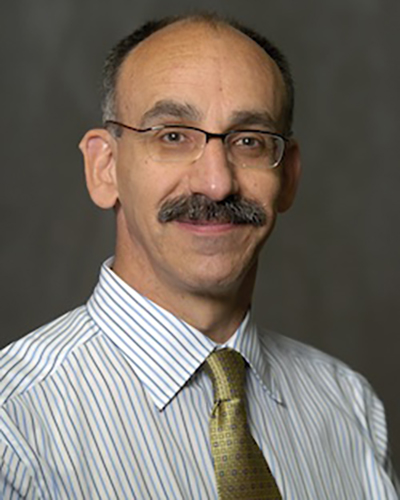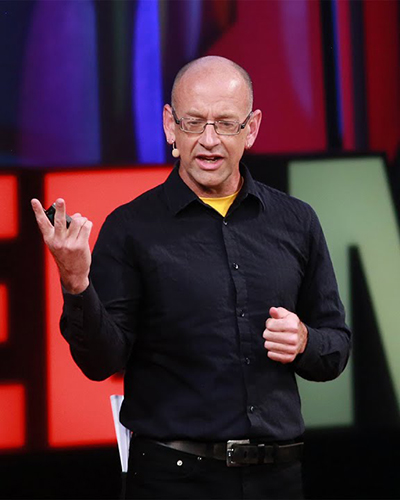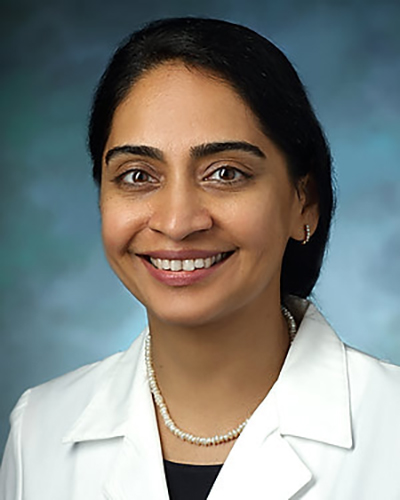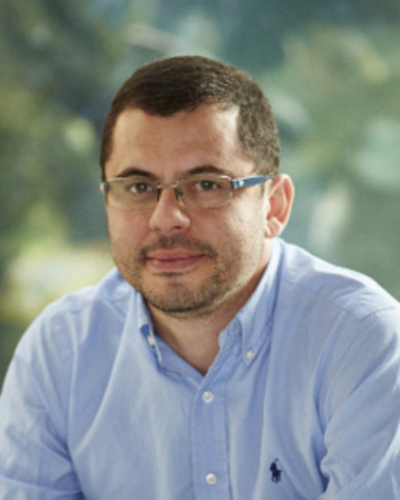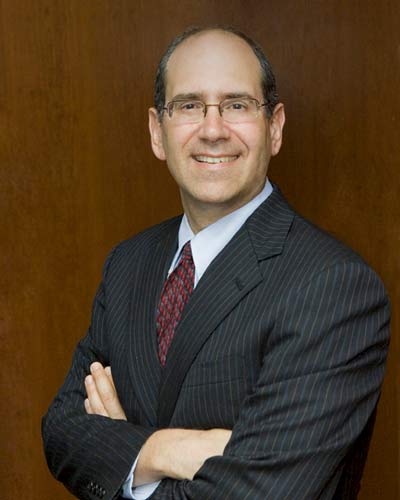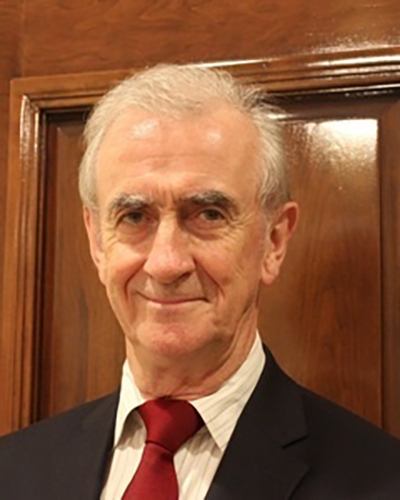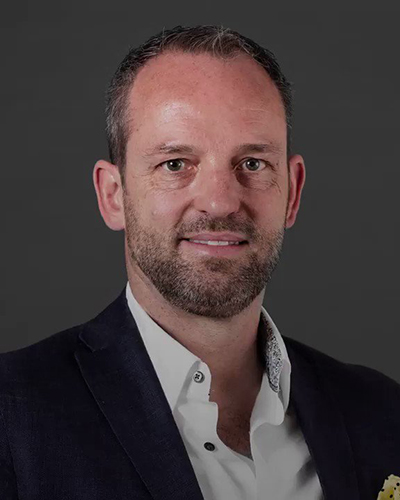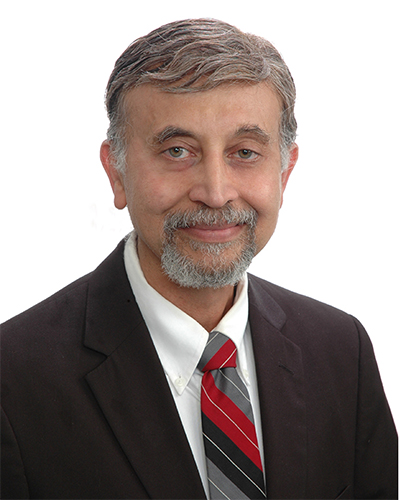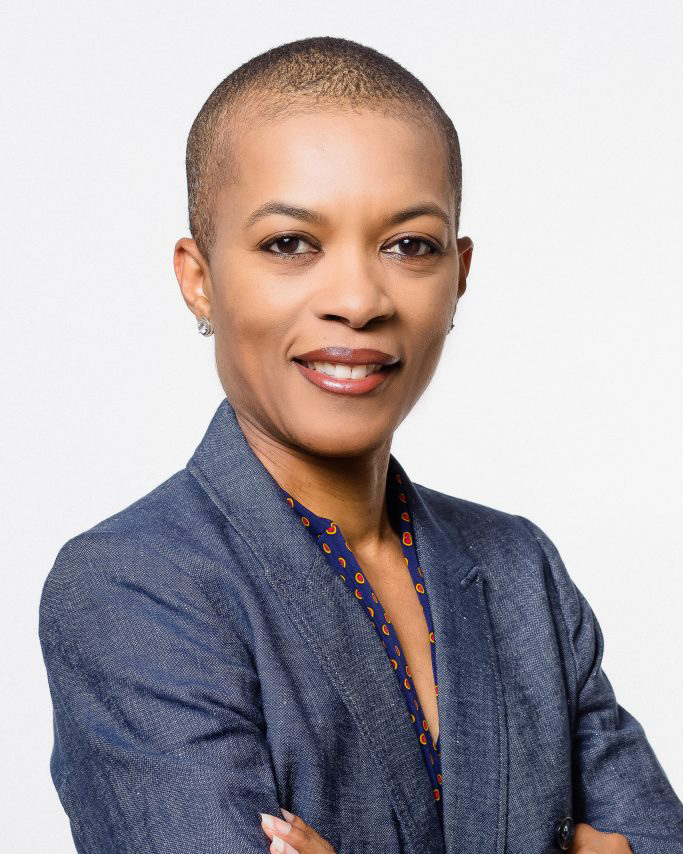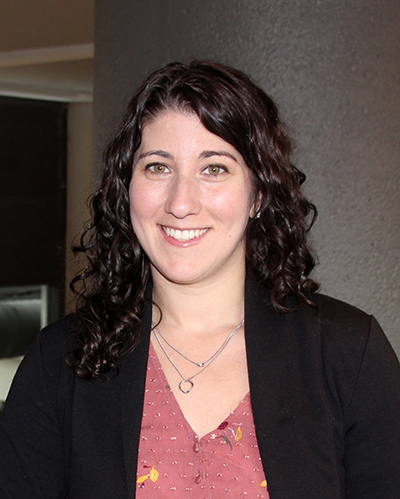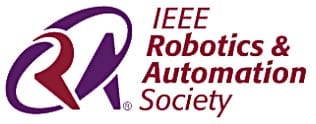Plenary Talks:
Keynote Speakers:
Invited Speakers – Rehabilitation:
Leaders Panel:
Government Panel:
Plenary Speakers (Sunday November 29, 2020):
| Daniel Wolpert, PhD | Probabilistic Models of Sensorimotor Control and Decision Making |
|---|---|
| Sunday Nov 29, 09:00-9:45 EST |
|
 | The effortless ease with which humans move our arms, our eyes, even our lips when we speak masks the true complexity of the control processes involved. This is evident when we try to build machines to perform human control tasks. I will review our work on how humans learn to make skilled movements covering probabilistic models of learning, including Bayesian models as well as the role of context in activating motor memories. I will also review our work showing the intimate interactions between decision making and sensorimotor control processes. Taken together these studies show that probabilistic models play a fundamental role in human sensorimotor control. |
| Daniel Wolpert read medicine at Cambridge before completing an Oxford Physiology DPhil and a postdoctoral fellowship at MIT. He joined the faculty at the Institute of Neurology, UCL in 1995 and moved to Cambridge University in 2005 where he was Professor of Engineering and a Royal Society Research Professor. In 2012 he was elected a Fellow of the Royal Society (FRS) and made a Wellcome Trust Senior Investigator. In 2018 he joined the Zuckerman Mind Brain Behavior Institute at Columbia University as Professor of Neuroscience. His research interests are computational and experimental approaches to human movement (www.wolpertlab.com). | |
| V. Reggie Edgerton, PhD | The Robotic Challenge: Meshing with the Biology |
|---|---|
| Sunday Nov 29, 09:45-10:30 EST |
|
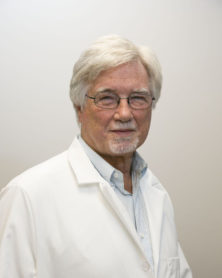 | The biology of the control of movement consists of simultaneously transforming in real time all of the multiple modes of sensory information, e.g., vision, proprioception, hearing, etc. In addition to there being multiple modes of sensation, there are enormous anatomical and physiological variations in the type of sensors and the physical and chemical modulations that are sensed. In spite of all of this complexity all of these sources of inputs are converted to essentially the same basic signal, an action potential of some amplitude and frequency. But this basically bipolar response takes place in an environment in which there is a continuous level of analog modulation which defines the nature of the response to sensations. Whereas considerable anatomical and physiological detail is known about many of these sensors and where the output projects to the next neuronal and receptor type, one of the reasons that the knowledge of much of how many different neurons interact to a specific sensor, there remains little understanding of how the nervous system generates and controls even simple behaviors. For example, there is been little focus from the broader perspective as to how the nervous system transforms this enormous amount of information from multiple modes of sensors. There is enormous expertise within each of these sensory modes, but little in regard to how these different types of neurons within a mode and even less when comparing input from two or more different modes. In addition, it is readily apparent that the continuous generation of the different physiological states over time have multiple mechanisms in which experience can be stored, i.e. some aspect of learning and/or adaptation. From this perspective, to match our present technical potential in robotic designs that can generate control motor tasks is in a state of infancy. The central point of this lecture will be that the present and most productive strategy in robotic development is to develop devices that will functionally mesh smoothly with the enormous potential that is intrinsic to the biological systems that are being controlled. Some examples of basic biological concepts that can be considered in robotic designs focused on controlling movement will be discussed. |
| V. Reggie Edgerton is a Professor of Neurobiology, Physiological Sciences, and Neurosurgery at UCLA. He has been a pioneer of the area of neuromuscular plasticity. He has developed neural modulatory technologies, epidural stimulation, and pharmacological modulation combined with physical training. His recent studies are demonstrating not only improved voluntary lower limb function following spinal cord injury, stroke, and Parkinson’s, but also Improvements in multiple organ systems such as improved upper limb function, bladder, bowel, and cardiovascular function after chronic complete paralysis. | |
Pediatric Rehabilitation Keynotes (Sunday November 29, 2020):
| James C. Galloway, PhD, PT | Mobile Learning Environments: Modified Cars and Portable Harnesses |
|---|---|
| Sunday Nov 29, 14:10-14:50 EST | |
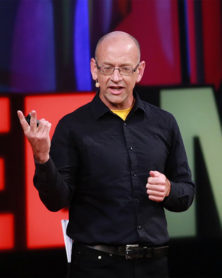 | Embodied development theory predicts that moving throughout the real world is a critical factor in a range of developmental domains including cognition, language, motor and socialization. In this talk, I will discuss our recent findings from NIH and NSF funded work with modified ride-on cars (MROCs), portable harness systems and 'smart toys'. In general, these technologies are focused on providing high dose, high-value opportunities for young children to advance their mobility within enriched social and physical environments. We believe our design process for these technologies has wide-ranging applications for both adult and pediatric rehabilitation technology that must perform in the real world. |
| Dr. Galloway’s “blue collar futurist” approach guides his collaborative work on supporting individuals in the co-creation of their world through mobility. His interests in human behavior, families, design thinking and social justice mix effortlessly with his professional background of rehabilitation, neuroscience, child development, human-machine interaction, dynamic systems concepts and open source culture. His team’s NIH, NSF and industry-funded R & D work — focused on the key role of social mobility in life — serves to unapologetically challenge the out of date cultures of pediatric and adult rehabilitation with a highly hopeful set of alternative products and processes. His current focus is on the impact of modified ride on cars, body weight harnesses placed in the real world, swarms of smart toys and on using STEM/STEAM classrooms as both research and manufacturing hubs. | |
| Eduardo Rocon de Lima, PhD | The Role of Neurorehabilitation for Pediatric Population with Cerebral Palsy |
|---|---|
| Sunday Nov 29, 14:50-15:30 EST | |
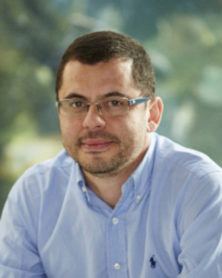 | Cerebral Palsy (CP) could be defined as a disorder that appears in infancy and permanently affect posture and body movement but does not worsen over time. CP is often associated with sensory deficits, cognitive impairments, communication and motor disabilities, behaviour issues, seizure disorder, pain and secondary musculoskeletal problems. Traditionally, robotic strategies have been focused on the Pe- ripheral Nervous System (PNS) supporting patients to perform repetitive movements (a ‘‘Bottom-Up approach’’). However, CP primarily affects brain structures, and thus suggests that both PNS and Central Nervous System (CNS) should be integrated into a physical and cognitive rehabilitation therapy. Current studies manifest that such integration of the CNS into the human–robot loop maximizes the therapeutic effects, especially in children. During this talk I will present and discuss a robot-based training program for gait rehabilitation of pediatric population with Cerebral Palsy. The robotic-based therapies were implement in the CPWalker device and recreates a situation as similar as possible to a real gait scenario, encouraging the patients to control different movements associated with gait: not only individual movements of lower limb joints but also the synergy between them while maintaining a proper posture of the upper body. We hypothesize that this interaction between the human and the machine, performed following an appropriate progression of the variables, boosted the rehabilitation of our patients. |
| Eduardo Rocon was born in Vitoria, Brazil (1979). He graduated in Electrical Engineering at Universidade Federal do Espiríto Santo (UFES) in 2001. Subsequently he moved to Spain to pursue a Ph.D. degree in Industrial Engineering at Universidad Politécnica de Madrid with Prof. A. Barrientos and Prof. J.L. Pons. His Ph.D. thesis (2006) was awar ded the Georges Giralt PhD Award (2008). In 2009, Dr. Rocon was awarded with a Ramón y Cajal contract to continue developing his activities (the most competitive and prestigious postdoc contract in Spain). At the age of 30, Dr. Rocon got a tenured researcher position (2010-present) at CSIC. His career has recently been awarded the prestigious Juan Lopez de Peñalver Award of the Spanish Royal Academy of Engineering. Dr. Rocon’s multidisciplinary work has contributed to different aspects of robotics, neuroscience and medicine. Dr. Rocon research activities have generated more than 150 publications scientific publication, 1 book, 9 book chapters, and 7 patents. | |
| Sunil K. Agrawal, PhD | Improving Trunk Control in Children with Cerebral Palsy using a Trunk Support Trainer (TruST) |
|---|---|
| Sunday Nov 29, 15:30-16:10 EST |
|
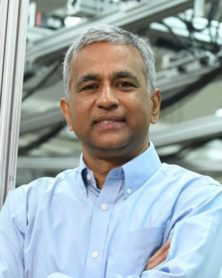 | Seated postural abilities are critical to functional independence and participation in children with cerebral palsy, Gross Motor Functional Classification System (GMFCS) levels III-IV. In this study, we investigated the feasibility of a motor learning–based seated postural training with a robotic Trunk-Support-Trainer (TruST) in a longitudinal study. TruST is a motorized-cable driven belt placed on the child’s trunk to exert active-assistive forces when the trunk moves beyond stability limits. TruST-intervention addresses postural-task progression by tailoring assistive-force fields to the child’s sitting balance to train trunk control during independent short-sitting posture. We show that our novel robotic TruST-intervention is feasible and can effectively maximize functional independent sitting in children with CP GMFCS III-IV. |
| Sunil K. Agrawal received a Ph.D. degree in Mechanical Engineering from Stanford University in 1990. He is currently a Professor and Director of Robotics and Rehabilitation (ROAR) Laboratory at Columbia University, located both in engineering and medical campuses of Columbia University. Dr. Agrawal has published more than 500 journal and conference papers, three books, and 15 U.S. patents. He is a Fellow of the ASME and AIMBE. His honors include a NSF Presidential Faculty Fellowship from the White House in 1994, a Bessel Prize from Germany in 2003, and a Humboldt US Senior Scientist Award in 2007. He is a recipient of 2016 Machine Design Award from ASME for “seminal contributions to design of robotic exoskeletons for gait training of stroke patients” and 2016 Mechanisms and Robotics Award from the ASME for “cumulative contributions and being an international leading figure in mechanical design and robotics”. He is a recipient of several Best Paper awards in ASME and IEEE sponsored robotics conferences. He has also held international visiting positions that include Technical University of Stuttgart, Hanyang University in Korea, University of Ulster in Northern Ireland, Biorobotics Institute of SSSA in Pisa, Peking University in China. He has successfully directed 30 PhD student theses and currently supervises the research of 10 PhD students at ROAR laboratory. He is the founding Editor-in-Chief of the journal “Wearable Technologies” from Cambridge University Press. He is the Conference Chair for IEEE BioRob2020 to be hosted in New York city. | |
Stroke/SCI Rehabilitation Keynotes (Sunday November 29, 2020):
| Joel Stein, MD | Upper Limb Robotic Devices: Matching the Design to the Clinical Needs |
|---|---|
| Sunday Nov 29, 16:20-16:50 EST | |
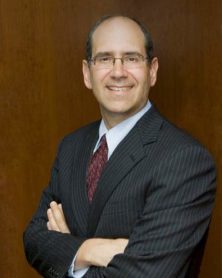 | A variety of neurological disorders can affect the use of the upper limb(s), including stroke, brain injury, spinal cord injury, nerve damage, and muscle diseases. The nature of the resulting sensorimotor impairments varies among these different conditions, as does the ability of the nervous system to repair damage and restore functional use. This lecture will review the impact of motor control impairment, weakness, ataxia, movement disorders, and sensory loss on upper limb sensorimotor function. We will discuss the targets that these conditions present for robotic therapies, including devices intended for rehabilitation therapy, as well as those intended to improve function as assistive devices. Both wearable and workstation devices will be discussed. |
| Dr. Joel Stein is the Simon Baruch Professor and Chair of the Department of Rehabilitation and Regenerative Medicine at the Columbia University Vagelos College of Physicians and Surgeons, as well as Professor and Chair of the Department of Rehabilitation Medicine at Weill Cornell Medical College, and Physiatrist-in-Chief at NewYork-Presbyterian Hospital. Dr. Stein’s primary clinical and research interests are in the area of stroke and other aspects of neurologic al rehabilitation. He has been active in research on the use of robotic and other technologies to facilitate recovery after stroke. He has written more than 80 original scientific articles, and over 160 publications in total in the area of stroke and other neurological rehabilitation. Dr. Stein has authored/co-authored two books on stroke for the lay public, and has served as editor of a comprehensive medical textbook on the subject entitled “Stroke Recovery and Rehabilitation” published by Demos Medical Publishing, now in its second edition. | |
| Preeti Raghavan, MBBS, MD | Framework for Designing and Deploying Robotics and Technology in Stroke Rehabilitation |
|---|---|
| Sunday Nov 29, 16:50-17:20 EST | |
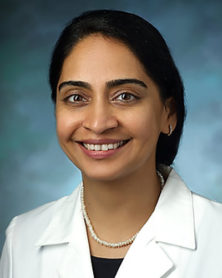 | Many unmet rehabilitation needs of patients with stroke can be addressed effectively using technology. However, technological solutions have not yet been seamlessly incorporated into clinical care. This talk will describe the A3E framework to address barriers in stroke rehabilitation and how technology-assisted solutions can overcome these barriers by increasing: 1) accessibility to quality rehabilitation, 2) adaptability to patient differences, 3) accountability or compliance with rehabilitation, and 4) engagement with rehabilitation. This framework can guide technology developers and clinicians in designing and deploying technology-assisted rehabilitation solutions for post-stroke rehabilitation, particularly using tele-rehabilitation. |
| Preeti Raghavan, M.D., is an associate professor of physical medicine and rehabilitation and neurology at the Johns Hopkins University School of Medicine. She is the director of the Center of Excellence in Stroke Treatment, Recovery and Rehabilitation at the Sheikh Khalifa Stroke Institute. S he uses innovative approaches to rehabilitation from stroke and other brain injuries, holding several patents for new technologies to support stroke recovery. She also serves as a vice chair for research in the Department of Physical Medicine and Rehabilitation and is director of the Motor Recovery Research Lab where she works with a multidisciplinary group of physicians, therapists and engineers. Her research interests include the recovery of arm and hand function after brain injury, understanding the mechanisms and treatment of muscle stiffness, improving access to cost-effective stroke rehabilitation and investigating how emotional regulation interacts with recovery. She completed a research fellowship in motor control and learning at Columbia University after a physical medicine and rehabilitation residency at Albert Einstein College of Medicine, New York. | |
| Alberto Esquenazi, MD | Robotics for Gait Rehabilitation After Stroke |
|---|---|
| Sunday Nov 29, 17:20-17:50 EST |
|
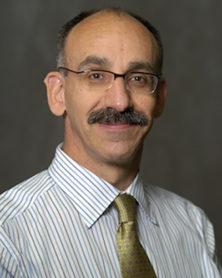 | Stroke high prevalence results in a significant number of individuals with gait dysfunction. Robotics application to gait rehabilitation has the potential to reduce disability, improve healthcare delivery and increase patient satisfaction. This presentation will explore available robotic devices for gait rehabilitation and their utility. The use of different devices including tethered exoskeletons, end effector devices, non-tethered exoskeletons and single joint robotic devices will be discussed. |
| Alberto Esquenazi, MD, serves as the John Otto Haas Chair of the Department of Physical Medicine and Rehabilitation at MossRehab/Einstein in Philadelphia. Dr. Esquenazi is Professor of Rehabilitation Medicine at Jefferson University and Adjunct Professor of Biomedical Engineering at Drexel University. Dr. Esquenazi’s research focuses on spasticity, gait analysis, limb prosthetics, orthotics and pioneering applications of robotics for rehabilitation. Dr. Esquenazi has published over 140 articles and book chapters. His research and clinical work has led him to be an invited speaker at national and international events. He is Past-President of the American Academy of Physical Medicine and Rehabilitation and recipient of the Frank Krusen Lifetime Achievement Award. | |
| Ann M. Spungen, EdD | 2010 to 2020 - The First Decade of Exoskeletal-Assisted Walking for Persons with Paralysis: What Have We Learned? |
|---|---|
| Sunday Nov 29, 17:50-18:20 EST | |
 | Persons with spinal cord injury (SCI) have adverse secondary medical and quality of life changes as a result of immobilization. A person with SCI who has completed rehabilitation after injury and is unable to ambulate receives a wheelchair as standard of care for mobility. Powered exoskeletons are a technology that has become available (mainly for research purposes) during the past decade. They offer an alternate form of mobility by providing an external framework for support and computer controlled motorized hip and knee joints to assist with standing and overground ambulation. Restoration of ambulatory function and the potential for the subsequent improvement of health has long been a goal of SCI rehabilitation research. The use of powered exoskeletons may offer a partial solution to this problem. Data from two exoskeletal-assisted walking clinical trials performed in participants with SCI will be reviewed. The goals of this presentation are to report the findings from these two trials as evidenced-based data on the following topics: 1) eligibility criteria for screening successes and failures, with an emphasis on the importance of bone mineral density and fracture screening; 2) number of sessions to achieve walking and mobility skills; and 3) select medical/health responses to over ground walking in these powered-robotic walking devices. |
| Dr. Ann M. Spungen is an applied physiologist who has been studying the medical consequences of spinal cord injury (SCI) since 1990. She is a Professor and the Vice Chair of Research for the Department of Rehabilitation and Human Performance and Professor in the Department of Medicine at the Icahn School of Medicine at Mount Sinai, New York, NY. Dr. Spungen is also the Associate Director of the VA Rehabilitation Research & Development (RR&D). Her work is the first to recognize the potential benefits of exoskeletal-assisted walking on bowel function, energy expenditure, body composition, quality of life and to describe specific contraindications using evidenced-based data for exoskeletal-assisted walking. In 2014, Dr. Spungen was recognized for her achievements in the study of the medical consequences of spinal cord injury and exoskeletal-assisted walking by being awarded along with her colleague Dr. William A. Bauman, one of the highest awards bestowed to federal employees, the “Samuel J. Heyman Service to America Medal for Science and Environment”. | |
Keynote Speakers (Monday November 30, 2020):
| Daniela L. Rus, PhD | Bio-Inspired Soft Robots |
|---|---|
| Monday Nov 30, 09:00-9:30 EST |
|
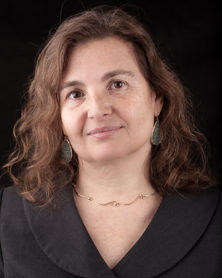 Daniela Rus | The digitization of practically everything coupled with the mobile Internet, the automation of knowledge work, and advanced robotics promises a future with democratized use of machines and wide-spread use of robots and customization. While the last 60 years have defined the field of industrial robots, and empowered hard bodied robots to execute complex assembly tasks in constrained industrial settings, the next 60 years will be ushering in our time with Pervasive bio-inspired robots that come in a diversity of forms and materials, helping people with physical tasks. How can we accelerate the creation of robots customized to specific tasks? Where are the gaps that we need to address in order to advance toward a future where robots are common in the world and they help reliably with physical tasks? In this talk I will discuss recent developments toward pervasive robots the role of computation in (1) on demand creation of robots, (2) making robots more capable of reasoning in the world, and (3) making more intuitive interfaces between robots and people. |
| Daniela Rus is the Andrew (1956) and Erna Viterbi Professor of Electrical Engineering and Computer Science and Director of the Computer Science and Artificial Intelligence Laboratory (CSAIL) at MIT. Rus's research interests are in robotics and . The key focus of her research is to develop the science of networked/distributed/collaborative robotics, by asking: how can many machines collabo rate to achieve a common goal? Rus is a Class of 2002 MacArthur Fellow, a fellow of ACM, AAAI and IEEE, and a member of the National Academy of Engineering and of the American Academy of Arts and Sciences. She is the recipient of the Engelberger Award for robotics. She earned her PhD in Computer Science from Cornell University. | |
| Qining Wang, PhD | Human-Centered Wearable Robotics: From Land to Underwater Applications |
|---|---|
| Monday Nov 30, 09:30-10:00 EST |
|
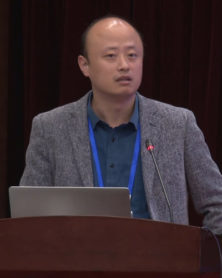 | This talk will show recent progress on wearable robotics, especially the new area of underwater applications. To date, all the exoskeletons have been studied to assist human motions on land. However, regardless of the exoskeletons being rigid or soft, an exoskeleton for underwater motion assistance has not been realized thus far. This talk will discuss the challenges of using exoskeletons for underwater applications. And recent breakthrough of an underwater soft exoskeleton from my lab will be introduced in detail. Three competitive swimmers participated the experiments to evaluate the proposed soft exoskeleton. Compared with breaststroke without assistance, the peak of surface electromyography in the sweep phase with the exoskeleton assistance decreased by 49.13% (gastrocnemius) and 74.51% (soleus) on an average. |
| Prof. Qining Wang received his Ph.D. degree in Dynamics and Control from Peking University in 2009. He serves as the Deputy-Dean of the College of Engineering in Peking University, China. He has authored/coauthored over 170 sc ientific papers in international journals and refereed conference proceedings. His research interests include bio-inspired robots and rehabilitation robotics. He serves as an Advisor of the IEEE-RAS Technical Committee on Wearable Robotics. He was an Associate Editor for the IEEE Robotics and Automation Magazine from 2016 to 2018. He has been a Technical Editor for the IEEE/ASME Transactions on Mechatronics since 2017, and an Associate Editor for the IEEE Transactions on Medical Robotics and Bionics since 2018. | |
| Daniel P. Ferris, PhD | Embodiment and Agility in Robotic Exoskeletons and Prostheses |
|---|---|
| Monday Nov 30, 17:00-17:30 EST |
|
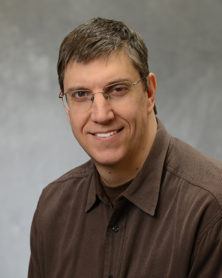 | Robotic technologies for assisting human movement have greatly advanced in recent years. Powered exoskeletons for human performance augmentation or neurological rehabilitation are becoming common in startup companies and university research laboratories around the globe. Bionic lower limb prostheses are now commercially available for individuals that have lost a limb to amputation. In the drive to create and test these new robotic devices, the gold standard for laboratory assessment has become metabolic energy expenditure. The rationale is that a device that enables the user to expand less energy during walking or running is necessary for user satisfaction. In this presentation, I will make the case that engineers and scientists need to focus more on embodiment and agility as their metrics for success for robotic exoskeletons and prostheses. Users need to feel that a robotic device is part of their body schema. They need to control it without added cognitive load. The controller needs to operate through as normal physiological pathways as possible. To be successful in the real world, robotic assistance devices need to enable users to navigate different types of terrain, dodge pedestrians, cars, and pets, and allow them to locomote in short bursts of acceleration and deceleration. Maintaining a steady, constant speed on a flat, smooth surface for thousands of steps is not the way humans move in the wild. Future research needs to better measure and improve embodiment and agility in our robotic mobility assistance devices. |
| Daniel Ferris is the Robert W. Adenbaum Professor of Engineering Innovation at the University of Florida. Dr. Ferris’ research focuses on the biomechanics and neural control of human locomotion, specifically in regard to human-machine interactions (mechanically and electrically). Projects include both technology development and basic physiological research using mobile brain imaging, robotic lower limb exoskeletons, and bionic lower limb prostheses. Dr. Ferris completed his Ph.D. at UC Berkeley, M.S. at the University of Miami, and B.S. at the University of Central Florida. After completing postdoctoral fellowships at the UCLA Department of Neurology and the University of Washington Department of Electrical Engineering, he joined the faculty at the University of Michigan for 16 years. In 2017, Dr. Ferris moved to the J. Crayton Pruitt Family Department of Biomedical Engineering at the University of Florida. He is Editor-in-Chief of the IEEE Transactions on Neural Systems and Rehabilitation Engineering and Chair of the NIH Musculoskeletal and Rehabilitation Sciences Study Section. | |
| Nabil Simaan, PhD | Continuum and Soft Robots for Surgery: Sensing, Situational Awareness Augmentation and Assistive Control |
|---|---|
| Monday Nov 30, 17:30-18:00 EST |
|
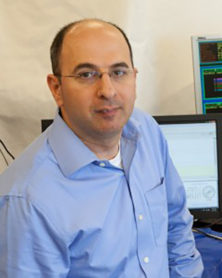 | Emerging surgical paradigms such as natural orifice surgery and minimally invasive surgery in deep surgical sites present new challenges to surgeons and engineers. These new challenges stem from the limitations of surgeon’s sensing, perception and incomplete situational awareness. The talk will discuss modeling, challenges and applications of continuum and soft robots for addressing these challenges in several domains of surgery. These robots range from continuum robots with force sensing and contact detection capabilities to elastomeric electrode arrays capable of traversing anatomical passageways in the inner ear. Within the context of these surgical applications, we will focus on our efforts in modeling, designing and controlling intelligent surgical robots capable of sensing the environment and using the sensed information for task execution assistance and for situational awareness augmentation. Sample motivating applications in the areas of minimally invasive surgery of the upper airways, cochlear implant surgery, trans-urethral resection of bladder tumors, and OCT-guided retinal micro-surgery will be used to elucidate the potential of these robots. |
| Nabil Simaan (Ph.D, 2002 Technion, Israel) is a Professor of Mechanical Engineering, Computer Science and Otolaryngology at Vanderbilt University, Nashville TN. He has served as an Editor for IEEE ICRA, associate editor for I EEE TRO, Associate Editor for ASME JMR, and editorial board member for Robotica and a co-chair of the IEEE Technical Committee on Surgical Robotics. His research interests include parallel robotics, continuum robotics and design of new robotic systems for dexterous and image-guided surgical robotics. His recent works focuses on use of intraoperative sensing for enabling complementary situational awareness in robot-assisted surgery. He was elected IEEE Fellow for contributions to dexterous continuum robotics for surgery. | |
Government Panel (Monday November 30, 2020):
| Fay Cobb Payton, PhD | Funding Opportunities at the National Science Foundation Relating to Robotics |
|---|---|
| Monday Nov 29, 12:00-12:30 EST | |
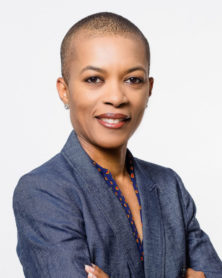 | Dr. Fay Cobb Payton will present on current NSF funding opportunities in the Directorate for Computer and Information Science and Engineering (CISE) along with some cross-directorate programs. The mission of the Directorate for Computer and Information Science and Engineering (CISE) is to enable the U.S. to uphold its leadership in computing, communications, and information science and engineering; promote understanding of the principles and uses of advanced computing, communications, and information systems in service to society; support advanced cyberinfrastructure that enables and accelerates discovery and innovation across all science and engineering disciplines; and contribute to universal, transparent, and affordable participation in an information-based society. CISE comprises four divisions: Office of Advanced Cyberinfrastructure (OAC); Division of Computing and Communication Foundations (CCF); Division of Computer and Network Systems (CNS); and Division of Information and Intelligent Systems (IIS). |
| Fay Cobb Payton is a Program Director for Computer and Network Systems in the Computer and Information Science and Engineering (CISE) Directorate at the National Science Foundation. She is on assignment from North Carolina State University, where she is a Professor of Information Tech nology/Analytics and named University Faculty Scholar. Her research examines data quality, bias in tech, healthcare IT/informatics, human computer interaction, tech innovation and the future of work. She has authored over 100 scholarly manuscripts and conference proceedings. She holds a Ph.D. in information and decision systems from Case Western Reserve University with a specialty in health care. Prior to her appointment at North Carolina State University, she worked at EY, IBM and Time Inc. | |
| Moria Bittman, PhD | Funding Opportunities at the National Institute of Health Relating to Robotics |
|---|---|
| Monday Nov 29, 12:30-13:00 EST | |
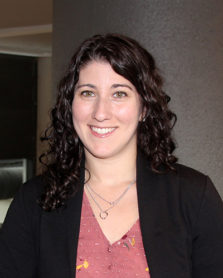 | Dr. Moria Fisher Bittmann will present on current funding opportunities at the National Institute of Biomedical Imaging and Bioengineering (NIBIB) and across the National Institutes of Health (NIH). The mission of NIBIB is to improve health by leading the development and accelerating the application of biomedical technologies. The Institute is committed to integrating engineering and physical sciences with biology and medicine to advance our understanding of disease and its prevention, detection, diagnosis, and treatment. NIBIB supports emerging technology research and development within its internal laboratories and through grants, collaborations, and training. |
| Dr. Moria Fisher Bittmann joined the National Institute of Biomedical Imaging and Bioengineering (NIBIB) in 2019 as a Program Director in the Division of Discovery Science and Technology. She has programmatic oversight of discovery and applied research grants, with an emphasis on robotics, bioelectronics and mechanical systems. Dr. Bittmann received a B.S. in Mechanical Engineering from the University of Michigan and a PhD in Bioengineering from the University of Illinois at Chicago. Moria conducted her graduate work at the Rehabilitation Institute of Chicago where she developed customized robotic therapies for post-stroke rehabilitation. She completed a postdoctoral fellowship at the University of Wisconsin in computational biomechanics. Prior to joining NIBIB, she was a Health Program Specialist at the National Institute of Neurological Disorders and Stroke (NINDS) supporting BRAIN Initiative funding opportunities for invasive technologies, computational neuroscience, and technology dissemination. Throughout her career, she has enjoyed working on interdisciplinary topics, collaborating on projects with engineers, clinicians, computer scientists and biologists. | |
Keynote Speakers (Tuesday December 1, 2020):
| Cecilia Laschi, PhD | Soft Robotics: From Bio-Inspiration to Biomedical Applications |
|---|---|
| Tuesday Dec 1, 09:00-09:30 EST |
|
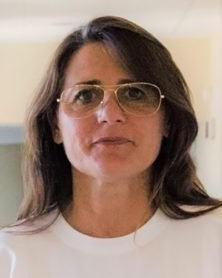 | Largely inspired by the observation of soft tissue role in living organisms, soft robotics is one of the current challenges for pushing the boundaries of robotics technologies and enable advances in robot abilities. At the same time, soft robots finds application in the biomedical field, safely interacting with patients, in rehabilitation and assistance, and navigating inside the human body, in surgery and endoscopy, as well as providng realistic simulators of human body parts. |
| Cecilia Laschi is a Professor at the National University of Singapore. Her research is in the field of soft robotics, a young research area that she pioneered and contributed to develop at international level. She is member of the IEEE, of the Engineering in Medicine and Biology Society (EMBS), and of the Robotics & Automation Society (RAS), where she serves as elected AdCom member and Co-Chair of the TC on Soft Robotics. She founded and served as General Chair for the First IEEE-RAS International Conference on Soft Robotics (RoboSoft), in Livorno (Italy), in April 24-28, 2018. | |
| Amy J. Bastian, PhD, PT | Identifying Intact Motor Control in Cerebellar Ataxia |
|---|---|
| Tuesday Dec 1, 09:30-10:00 EST |
|
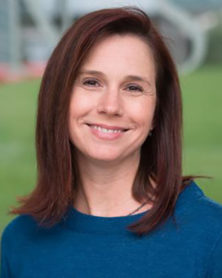 | It is thought that the brain does not simply react to sensory feedback, but rather uses an internal model of the body to predict the consequences of motor commands before sensory feedback arrives. Time-delayed sensory feedback is used to correct for the unexpected—perturbations, motor noise, or a moving target. The cerebellum has been implicated in this predictive control process. Here we show that the feedback gain in patients with cerebellar ataxia matches that of healthy subjects, but that patients exhibit substantially more phase lag due to increased reliance on feedback control. We then show that we can improve cerebellar patients’ movement control by altering (phase advancing) the visual feedback they receive from their own self movement in a simplified virtual reality setup. |
| Dr. Amy Bastian is a neuroscientist and physical therapist who studies the neural control of human movement. She is Chief Science Officer of the Kennedy Krieger Institute and the Director of the Motion Analysis Laboratory. Dr. Bastian holds the rank of Professor of Neuroscience at Johns Hopkins, with a joint appointment in Neurology and PM&R. She studies how people with and without neurological damage control movement and learn new patterns. Her laboratory uses computerized movement tracking techniques, non-invasive brain stimulation, novel devices and robotics to control walking and reaching movements. One major focus of her work has been on the role of the cerebellum in moving, sensing and learning. | |
Leaders Panel (Tuesday December 1, 2020):
| Nitish V. Thakor, PhD | NeuroProsthesis: State of the Art and Future Challenges |
|---|---|
| Tuesday Dec 1, 17:00-17:10 EST | |
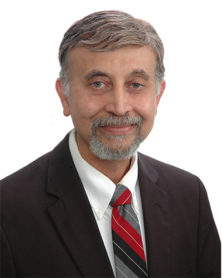 | NeuroProsthesis has captured the imagination of researchers (and even entrepreneurs) due to the exciting synthesis of the fields: prosthesis and neuroscience/neuroengineering. Both have advanced incredibly rapidly in the past 10 years, with the development of dexterous upper limb prosthesis and high performance lower limb prosthesis. From the traditional body powered, the control has shifted to myoelectric pattern recognition, targeted muscle reinnervation, peripheral nerve interface and cortical control. The peripheral and neural control have been enabled by the advances in neural interface technologies and the field of brain machine interface. I will briefly summarize these topics and then lay out the very recent trends and the technological challenges posed: prosthesis and neural interface technology and machine learning techniques and incorporation of sensory, motor and cognitive interfaces. |
| Nitish V. Thakor is a Professor of Biomedical Engineering with Johns Hopkins University and the National University of Singapore where he founded Singapore Institute for Neurotechnology (SINAPSE) and ran it as a founding Director from 2012-2018. He carries out research on many technologies from brain monitoring and implantable neurotechnologies to neuroprosthesis and brain-machine interface. He has published over 400 refereed journal papers (Google H Index 83), obtained 16 US and international patents and co-founded 3 active companies in the USA. He is currently the Editor in Chief of Medical and Biological Engineering and Computing (Springer/Nature). He is the Editor of an upcoming authoritative reference Handbook of Neuroengineering. He is a Fellow of the American Institute of Medical and Biological Engineering, Life Fellow of IEEE, Biomedical Engineering Society, and International Federation of Medical and Biological Engineering. | |
| Robert Riener, PhD | Highlights from the Cybathlon 2020 |
|---|---|
| Tuesday Dec 1, 17:10-17:20 EST | |
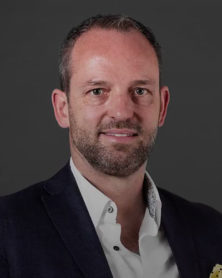 | Most commercial knee prostheses are still not powered, which makes stair and slope walking challenging. Many people with arm amputations are not using their prosthetic devices. And commercial wheelchairs have still problems to encounter uneven terrain and steps. Therefore, I initiated the Cybathlon, an Olympic-style competition for athletes with physical disabilities who are using advanced robotic technologies. The main goal is to promote development of better technologies for the physically disabled person and encourage the exchange between people with disabilities, the general public and the research. The world first Cybathlon took place in 2016; the next one was on November 13/14 this year organized as a global event, with races at more than 40 hubs from all over the world, life broadcasted from ETH Zurich. In my talk I will present the highlights of the latest global edition. |
| Robert Riener is full professor for Sensory-Motor Systems at, ETH Zurich, and full professor of medicine at the University Hospital Balgrist, University of Zurich. His work focuses on the investigation of the sensory- motor interactions between humans and machines and the development of user-cooperative rehabilitation robots, exoskeletons and virtual reality technologies. Riener is the initiator and organizer of the Cybathlon. He has published more than 400 peer-reviewed journal and conference articles, 20 books and book chapters and filed 25 patents. He has received more than 20 personal distinctions and awards. In 2018 Riener obtained the honorary doctoral degree from the University of Basel. | |
| Neville Hogan, PhD | Can We Develop a Validated, Quantitative Theory of Neuro-Recovery? |
|---|---|
| Tuesday Dec 1, 17:20-17:30 EST | |
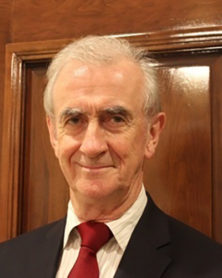 | Successful development of technology to aid recovery after neurological injury depends on our knowledge of how humans recover. That is arguably more important than state-of-the-art technology. To support design and development, the relevant knowledge must be soundly validated and expressed quantitatively. Unfortunately, that is a considerable challenge, to which the field has not yet risen. If we are to understand recovery it seems reasonable to suggest that we should first understand unimpaired sensory-motor control—but key questions remain unresolved. Is human motor control continuous or intermittent? Do balance, locomotion and manipulation share a common control architecture? Are synergies real or an artifact of our data processing? If real, are they immutable? Until we can answer these questions quantitatively, developing technology for neuro-recovery is doomed to Edison-style blind empiricism, and that’s unacceptably slow. We need a validated, quantitative theory! |
| Neville Hogan is Sun Jae Professor of Mechanical Engineering and Professor of Brain and Cognitive Sciences at the Massachusetts Institute of Technology. He earned a Diploma in Engineering (with distinction) from Dublin Institute of Technology and M.S., Mechanical Engineer and Ph.D. degrees from MIT. He joined MIT’s faculty in 1979 and presently Directs the Newman Laboratory for Biomechanics and Human Rehabilitation. He co-founded Interactive Motion Technologies, now part of Bionik Laboratories. His research includes robotics, motor neuroscience, and rehabilitation engineering, emphasizing the control of physical contact and dynamic interaction. Awards include: Honorary Doctorates from Delft University of Technology and Dublin Institute of Technology; the Silver Medal of the Royal Academy of Medicine in Ireland; the Henry M. Paynter Outstanding Investigator Award and the Rufus T. Oldenburger Medal from the American Society of Mechanical Engineers, Dynamic Systems and Control Division; the Academic Career Achievement Award from the Institute of Electrical and Electronics Engineers, Engineering in Medicine and Biology Society; and the Saint Patrick’s Day Medal for Academia from Science Foundation Ireland. | |
